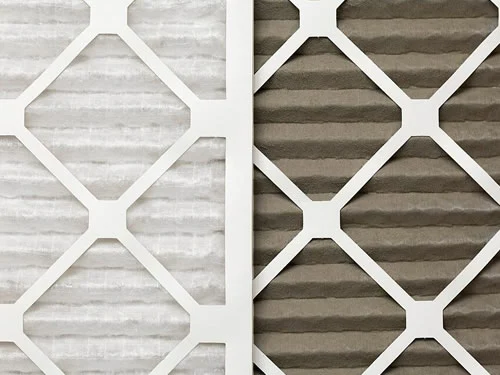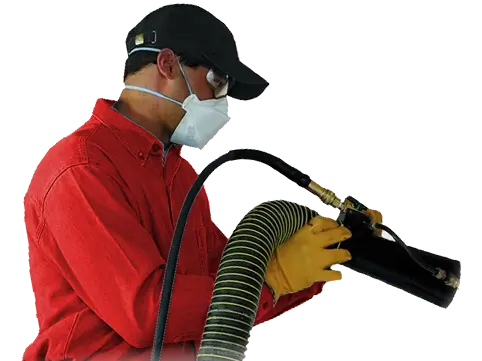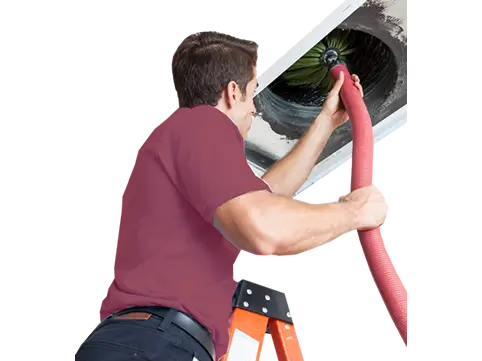
Indoor Air Quality Experts Houston
Improve Your Home’s Indoor Air Quality for the Health of Your Family
Air Duct Cleaning, Air Filters, Air Purifiers, and UV lights for Clean, Easy-to-Breathe Air in Your Home Year-round
Clearing the Air in Your Home
Poor indoor air quality is a common problem that develops when pollutants accumulate in your home.
When you address your indoor air quality, you can expect fewer trips to the doctor and a better quality of life. The first step is calling John Moore for free Indoor Air Quality testing, which includes a consultation with a TACL licensed professional and a step-by-step IAQ inspection of your home. From there, we will recommend the best options to improve the air in your home.
Need Financing? Don’t forget that John Moore offers 0% down in-house financing with approved credit? Apply today.
Why is Indoor Air Quality (IAQ) Important?
Home: it’s where you unwind after a long day of work, cook meals, clean, and relax with family and pets.
Home is also the space where you have the most control over the quality of air you breathe, which in turn affects your health and the health of your family.
We’ll start with the good news: you have control over your indoor air quality, which can be improved with good ventilation and air purification systems that trap and neutralize contaminants in your air.
The bad news: it’s entirely possible to be totally unaware of the contaminants accumulating in your air because many air contaminants aren’t visible. You’ll be able to spot some indoor air pollutants if you know what to look for, like the dust and dander that collect in your home’s ventilation system. Other indoor air contaminants such as viruses, volatile organic compounds (VOCs), and gasses can be more difficult to spot.
If you’re proactive about purifying your home’s air and ensuring you have good filtration systems and ventilation, you can protect your family from the health effects of poor indoor air quality.
Air Quality in Houston and the Greater Houston Area
Often, folks think about air quality as an outside issue, especially in the Houston area where air pollution is worse than many other regions in the country.
Indoor Air Quality Contaminants
Though air pollution is often associated with outdoor air quality, the air inside your house can actually be worse than the air outside.
Invisible pollutants like radon can build up over time in indoor environments, some reaching much higher concentrations than in typical outdoor air. Aside from the dust and dander that you might expect to contaminate indoor air, many indoor air quality contaminants are actually generated indoors from combustion, carcinogens in cleaning supplies, insecticides, building materials, and natural sources. For example, burning certain candles, cooking certain foods, and using certain surface cleaners can release volatile organic compounds (VOCs) and other pollutants into the air of your home.
Common Indoor Air Pollutants of Concern:
- Dust, bacteria, hair, and dander from pets and household members
- Carbon monoxide, particulate matter, and other combustion byproducts
- Radon and mold Pesticides, lead, asbestos, and ozone
- Volatile Organic Compounds from household products
Now, before diving into the health effects of poor air quality, it’s important to remember that you do not need to change anything that makes a home worth being in—including the food you cook or the pets you care for—in order to address the problem of poor indoor air quality. You can take control of your indoor air by knowing the signs of common pollutants and preventing them from accumulating. With air purifiers, strong filtration systems, and good ventilation throughout your home, you can continue doing the things you enjoy without pollutants and allergens getting in the way.
How Indoor Air Quality Impacts Your Health
You may not be able to see deteriorating air quality at home, but if you have poor indoor air quality you often can feel it. The health effects of poor indoor air quality range from the annoying to the long-term, depending on the types of contaminants that concentrate in your home.
| Common Indoor Air Contaminants | Possible Health Impact and Symptoms |
|---|---|
|
Biological Pollutants:
|
Health Impact:
|
|
Combustion byproducts:
|
Health Impact:
|
|
Pollutants from outdoors:
|
Health Impact:
|
|
Volatile Organic Compounds (VOCs):
|
Health Impact:
|
Lennox Premier Dealer
Attic Insulation Special

$100 OFF
For a Limited Time• Increase energy efficiency
• Improve your comfort
Indoor Air Quality & Duct Cleaning

$100 OFF
For a Limited Time• Eliminate pet & household odors
• Breathe and sleep better
$50 OFF Nisus DSV Treatment
Specifically formulated to prevent contamination, and to eliminate existing viruses and bacteria, including the Coronavirus.
John Moore
(877) 730-2525
**This will not keep them out. Regular cleaning and disinfecting by home owner is required. Applies to initial treatment. Limit one per household. Some restrictions may apply. Cannot combine offers. Expires 12/31/2020.
Click here to see all coupons.
SEND TO PHONE$100 Off Platinum Carbon Air Purifier
Cleans the air by combining UVC light and activated carbon – two technologies proven to kill germs and clean the air.
John Moore
(877) 730-2525
*This purifier is installed directly into the central air system, so the air is purified and circulated throughout the whole home. Limit one per household. Some restrictions may apply. Cannot combine offers. Expires 12/31/2024.
Click here to see all coupons.
SEND TO PHONEAC Services
Save $20 on your next AC service or repair with any work over $100.
John Moore
(877) 730-2525
*Limit one per household. Some restrictions may apply. Cannot combine offers. Expires 12/31/2024.
Click here to see all coupons.
SEND TO PHONEAttic Insulation
Save $100 on attic insulation with minumum R-19 and 2,000 sq. ft.
John Moore
(877) 730-2525
*Limit one per household. Some restrictions may apply. Cannot combine offers. Expires 12/31/2024.
Click here to see all coupons.
SEND TO PHONEUV Light Disinfection
FREE UV light with purchase of complete new 16-SEER AC system.
$549.99 Value
John Moore
(877) 730-2525
*Limit one per household. Some restrictions may apply. Cannot combine offers. Must be presented at time of purchase. Expires 12/31/2024.
Click here to see all coupons.
SEND TO PHONEShare this Page
